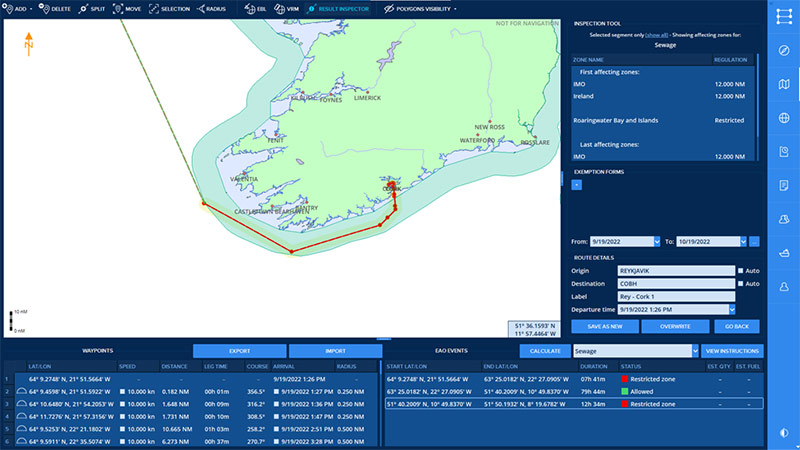The requirement that cruise lines adhere to the most recent environmental regulations can be challenging or even detrimental through penalties. This is where EMH Systems’ ECAP innovation comes into play, as it can become a useful tool for highly accurate route planning, active monitoring and optimization of vessel operations.
The first method is to install the full version directly on the bridge of the vessel. For automatic route sharing, the software then communicates with the onboard ECDIS system as well as two remote web-based applications.
One is used for remote vessel monitoring, while the other is used for regulatory management, according to Christopher Nagy, managing partner, EMH Systems.
ECAP is also incorporated through integration partners via an API. In this case, it is installed on a shoreside server and can be accessed by other voyage planning or monitoring solutions. This is currently used by Chartworld’s MyRA, ABS’s My Digital Fleet solution, and CAIM’s Navigate, among others.

“The ECAP software runs a calculation on any route that shows any and all environmental restrictions along the voyage. These include the estimated time and location that the vessel should stop certain operations due to regulations or best practices,” commented Nagy.
“This is planned out and presented to the user in several ways including color codes on the navigation chart or compiled in a pdf that can be attached to the actual voyage plan. It should also be noted that the planning phase is only the first part of operations that the ECAP covers as it also monitors the vessel while underway.”
A global collection of marine restrictions and boundaries, including national baselines, territorial seas, and EEZs, is also included in the database. In order to do precise calculations for the ECAP, the company’s in-house GIS experts either develop this geodata using references to national laws and UN documents or, if applicable, obtain it directly from federal agencies.
The company collaborates with a global network of correspondents through its in-house team of marine environmental specialists, while communication with local authorities is also essential.
“Using our specialists and our network we build and maintain our internal database of regulations. This is then vetted and verified by the American Bureau of Shipping as well as a local maritime law firm for extra support,” added Nagy.
EMH Systems is currently working with Norwegian Cruise Line Holdings’ and has installed ECAP on the Norwegian Prima. It also has an agreement in place with Mystic Cruises and fleet installations are set to begin this October, including on the newWorld Traveler.
In addition to ECAP, EMH Systems also offers the Maritime Environmental Hub web application both to individuals and industry partners as a guidance tool with no need to access the ECAP.




